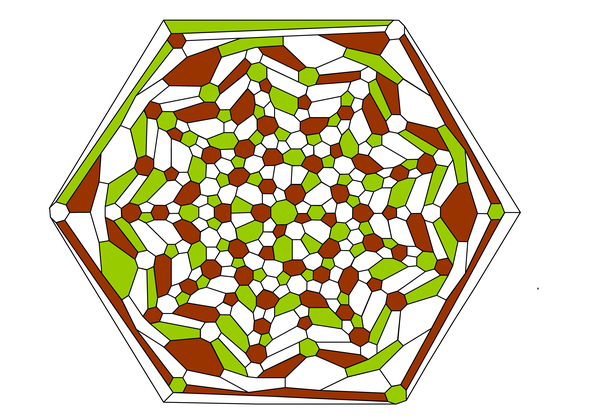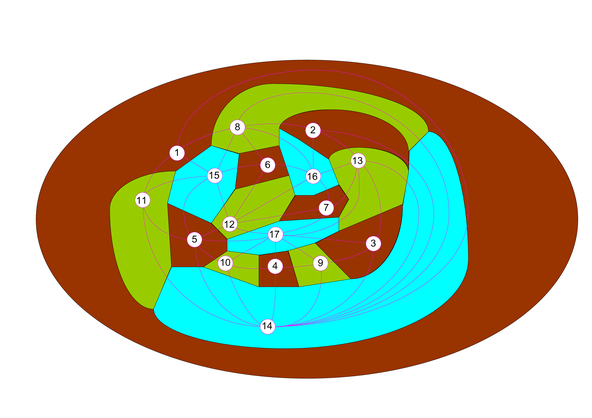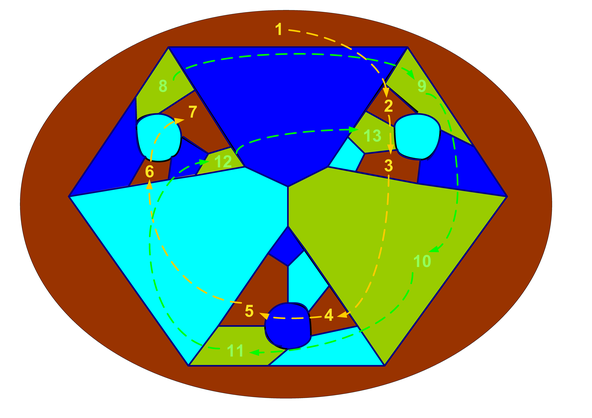Create your own four-colored world
Our algorithmic method has been given in three steps. The first two steps are the maximal mono-chromatic and then maximal di-chromatic coloring of the faces in such a way that the resulting uncolored (white) regions of the incomplete two-colored map induce no odd-cycles so that in the (final) third step four coloring of the map has been obtained almost trivially. In order to make the map-coloring algorithm more visible and meaningful let us define the four-color set as
C = {B,G, dB, lB}, where
- B denotes brown color and when it is assigned on to the white background color the corresponding region becomes a “high-land”.
- G denotes green color and when it is assigned on to the white background color the corresponding region becomes a “low-land”.
- dB denotes dark-blue color and when it is assigned on to the white background color the corresponding region becomes a “deep sea”.
- lB denotes light-blue color and when it is assigned on to the white background color the corresponding region becomes a “shallow-sea”.
Initially the given map colored all by background color white and at the end of the coloring algorithm (three steps) it will be colored by the colors C and no white color remains on the map.

Maximal mono-chromatic coloring of the Appel and Haken's map
Maximal mono-chromatic coloring of high-land (brown) regions. Note that we start coloring from the outer region and must be all adjacent to white (not colored) regions. Intersection of three adjacent regions have been shown with small circles (unwanted spots) and must be vanished as shown in the maximal 2-coloring of the map.





































